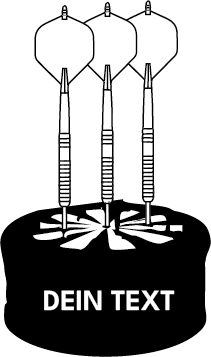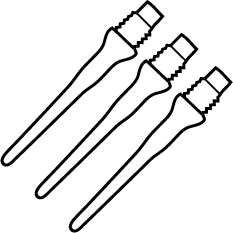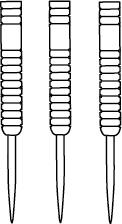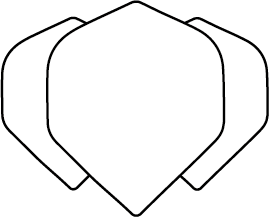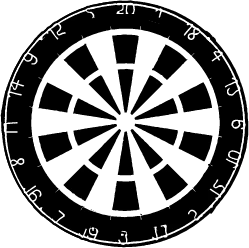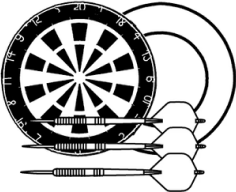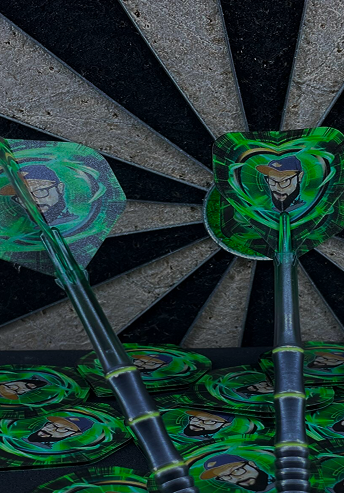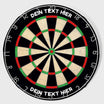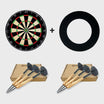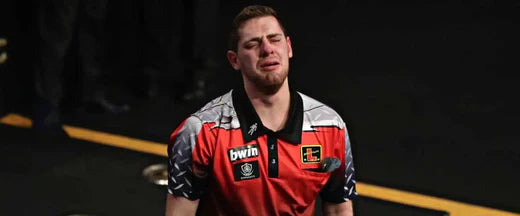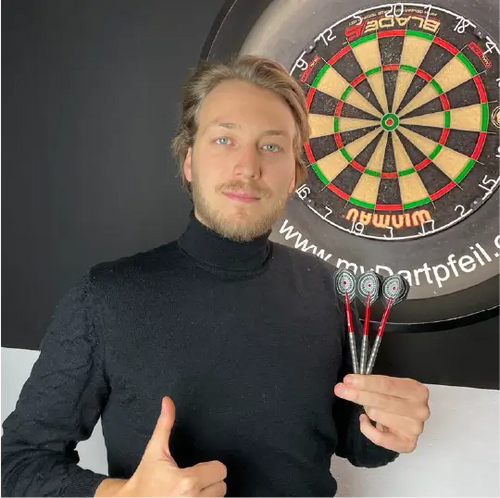The term "dartitis" often brings a smile to the face of many people. When it's explained that it's actually a disease, the smile often turns into a shake of the head in disbelief. But what exactly is dartitis, and what causes it? We spoke with people affected by the disease. They describe dartitis as a condition in which the player is no longer able to release the dart at the desired moment. A psychological problem, also known as a "head problem," is usually behind the disease.
What is dartitis?
According to many, dartitis progresses gradually. Initially, most players had no problems playing darts or finding their rhythm in their throw. This is because there is no pressure situation in which the player feels they absolutely have to hit a certain area. Only in exceptionally stressful situations do many players experience the first signs of dart disease. They feel like they are no longer in control of their hands and can no longer release the dart at the usual moment.
Anyone who has experienced these moments has come into contact with dartitis at some point. The problem and the danger of this illness, however, lie primarily in the fact that self-confidence is lost due to a few of these lapses and the problem then occurs more and more frequently. This often leads to the dart no longer landing in the board at all, but only in the surround . The player finds it very difficult to cope with this error because such a problem has never occurred before. As a result, the mental problem now begins. The player thinks too much about his throwing style and subconsciously changes things in order to become successful again - only in the rarest of cases does this result in a positive result.

What are the causes of the disease?
The main cause is usually the risk of failure. In a one-on-one situation in front of the dartboard, the fear of losing overwhelms everything else, even the pleasure of potential success. Dartitis can affect virtually any player. The trick is to remain confident in your own abilities, even after a difficult phase. As soon as you seek too much change, dartitis only spreads more noticeably.
The most dangerous moment is when the player keeps thinking to themselves: "I used to be so much better. Why doesn't it work anymore today?" It's incredibly difficult to block out these thoughts when the quality of their game noticeably declines – despite a higher training workload. The player, in turn, looks for playful and technical solutions, but forgets one thing above all: the mental solution. They should first completely free themselves from their inner constraints. In other words: tinkering with the darts and their throwing technique won't cure dartitis. Therefore, addressing the root cause must begin in the mind.
How can dartitis be cured?
Dartitis is a condition in which the player is no longer able to release the dart at the desired moment.
Ultimately, dartitis isn't a fine motor disorder of the fingers and hands, but rather a mental problem that affects the hands. Dartitis can certainly be cured through regular mental training. The first step is to tone down your athletic ambition so you don't focus too much on winning.
Rather, it's about assessing your own performance—regardless of whether the game ended in a win or a loss. Furthermore, it's a good idea not to just aim for the 20, but simply to throw at a target, regardless of the segment. You should let go of the idea that the 20 is the highest segment. It's a square like any other on the board.
Unfortunately, very few players seek help for this problem. Instead, they bury themselves in their own search for the cause, which will not lead to success until the issue has been addressed in more detail. Hypnosis has therefore already been used as a successful therapeutic tool. Hypnosis is intended to free the player from thoughts and prejudices during their darts matches. At the end of the day, it's really just about throwing at a board – only when this certain "looseness" returns can dartitis be combated.
Even professional players are not spared – Mensur Suljovic
Two prominent examples demonstrate that even renowned professional players are not immune to dartitis. Mensur Suljovic, currently one of the best players in the world, struggled with dartitis for a long time. His career was even on the verge of being over. Fortunately, Suljovic acted in time to relieve the cramping in his arm. He first honed his throwing technique.
The Austrian has perfected his throw to such an extent that releasing the darts and the entire preparation for the throws are like a ritual. Always the same movements and sequences. Thanks to this pattern, Suljovic no longer worries about what is right or wrong. He goes through his entire process over and over again, completely routinely. Eventually, he reached the point where this familiar pattern no longer required any thought. As a result, the pressure gradually decreased, and Mensur Suljovic became the player we know today as the absolute top player in the PDC.
A very tragic story: Berry van Peer suffered on stage
Mensur Suljovic is not the only example of a darts professional suffering from dartitis. Berry van Peer also suffers from it. Van Peer's recent case shows how quickly dartitis can develop. All viewers of the 2017 Grand Slam of Darts will remember it well. In the first group match against Simon Whitlock, van Peer took an unusually long time to execute his throws. As the match progressed, Whitlock became more agitated and visibly annoyed because he himself could not find his usual rhythm. It was only after the match that Whitlock learned of Berry van Peer's problems.
Something both special and tragic happened a few days later: Berry van Peer faced Gary Anderson in the second match of his group. It was in this game that van Peer's spirits finally broke. For minutes, Berry van Peer fought against the illness with tears in his eyes. The pressure and the attention he was receiving were ultimately too much for the young player. Everyone in the arena, as well as the TV viewers, could feel the Dutchman's tragedy and suffering. It was definitely one of the most emotional moments in recent darts history. Anyone who has ever suffered from the disease will have the utmost respect for van Peer for even taking to the stage a second time. Chapeau!

Mental training as an aid
But now it's time to recognize dartitis as a disease. Numerous amateur and professional players suffer from the condition repeatedly. Only when it's taken seriously can it be successfully combated. Therefore, the topic of mental training in darts is receiving more attention than ever before. Many players are convinced that darts is more about the mind than practical training.
Learn the best techniques and proven tips that will make you a darts champion. Click here and start your journey to dartboard perfection!
- Learn more about perfect dart checkouts here. Click here to learn about the checkout techniques of dart pros.
Sofern nicht anders angegeben, unterliegt das im Beitrag gezeigte Bildmaterial mit Bezug zu Dartspielern und verwandten Themen dem Copyright der Professional Darts Corporation (© PDC).

